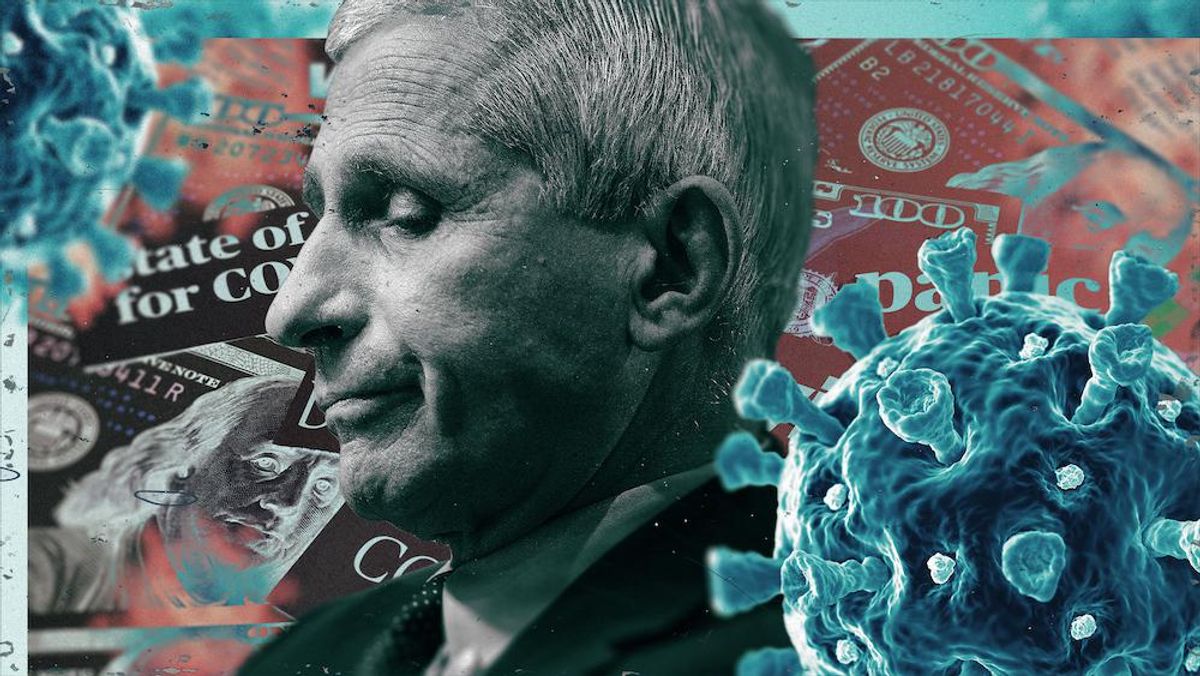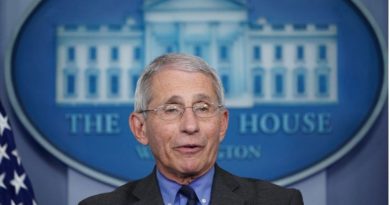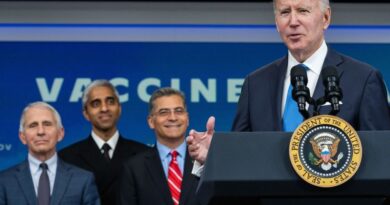Cash, COVID, and cover-up, part 1: The questions we should have asked of Fauci about the origins of COVID-19

Less than two years ago, an outbreak of a new, flu-like virus that would eventually be known as COVID-19 began in Wuhan, China. Today, almost 5 million people globally have died from this pandemic, and we are no closer to understanding how it began.
Well, that’s not entirely true. We are closer, but only by virtue of being allowed to ask in public a rather inconvenient question: Was a foreign lab that received U.S. taxpayer funding for years responsible for the start of the spread of this pandemic?
For months, this question was considered publicly taboo, prohibited from discussion (except as a topic of derision as a wild-eyed conspiracy theory) by a group of scientists who were, incredibly, some of the same people who should have been under the most intense scrutiny. The bizarre tableau would not have played out in any other walk of life. If ExxonMobil had conducted drilling operations that resulted in a massive oil leak, the media would not have refused to investigate the cause of the leak because respected scientists who happened to be employed by ExxonMobil insisted that it was not ExxonMobil’s fault.
And yet, incredibly, that appears to be exactly what happened to the most significant question that has faced our generation. The very people who stood to lose the most were allowed to hastily exonerate themselves, and for months — when important information should have been uncovered — social media companies and the media actually covered for them and are still covering for them today.
The decision to rule this topic out of bounds was made in late January 2020, just a few days after the first cases of COVID-19 were detected in Washington state. Dr. Anthony Fauci, who has perhaps done more to shape coronavirus response policy than any other person in America, was a central figure in those discussions.
+++++++++
It is difficult, after all that has happened over the last two years, to remember a time when Dr. Fauci was not famous, but it is important to remember that when the discussions that would shape the investigation into the origins of the COVID-19 pandemic began, the men and women who conferred with him were not conferring with the celebrity who would soon come to dominate American media coverage. They were, rather, conferring with a bureaucrat — one whom a vast, overwhelming majority of Americans could not have picked out of a lineup when he was announced as a member of then-Vice President Mike Pence’s coronavirus task force on Jan. 29, 2020.
But just because he wasn’t famous doesn’t mean he wasn’t powerful. Not only is he literally the highest-paid employee of the entire federal government, but Fauci’s National Institute of Allergy and Infectious Diseases (NIAID) provides billions of dollars for research projects in the United States and around the world. NIAID was responsible for doling out nearly $3 billion annually in federal taxpayer dollars to research scientists between fiscal years 2017 and 2019. In FY 2021, NIAID received an annual budget of $6,067,071,000. The agency plans to fund another $3.8 billion in research grants this year, 62% of its budget.
The director of NIAID wields enormous power and influence over which research projects receive that funding, which scientists will be paid to continue their work, and which therapies, vaccines, diagnostic tests, and other technologies get developed in the competitive field of infectious, immunologic, and allergic diseases. And Fauci is the longest-serving head of NIAID, having been appointed director in 1984 and supervising research both within and without the agency from that position for nearly four decades since.
So, while the average American might never have heard of Dr. Anthony Fauci prior to sometime in February or March 2020, the people who study viruses for a living certainly had. Not only had they heard of him, but they were also acutely aware that he was in charge of the funding upon which a significant portion of their livelihood depends. Risking the disfavor of Fauci was not a move many in the field of infectious disease research would make.
Another important individual in that field was Dr. Jeremy Farrar, director of the megacharity known as the Wellcome Trust. With an annual total disbursement budget of over $11 billion — a significant portion of which is spent on infectious disease research — Farrar also represented an enormously important gatekeeper of medical research funding. The Wellcome Trust had a financial endowment of £29.1 billion, or just over $40 billion, in 2020, making it the fourth wealthiest charitable foundation in the world.
Both Fauci and Farrar would play key roles in shaping the public response to questions about the origins of COVID-19. And they would serve — whether willfully or not — to stamp out questions that would have tended to implicate recipients of their funding largesse — and thus ultimately themselves. Somehow, very few people in the media found this worthy of curiosity, much less rigorous investigation.
Indeed, when Fauci finally faced aggressive questioning on the subject, from Kentucky Republican Sen. Rand Paul, CNN’s Jake Tapper exemplified the approach of most of the media by treating Paul’s questions as scandalous in and of themselves and not worthy of even being repeated on air. Thus has our watchdog media completely failed to fulfill its responsibility to hold powerful bureaucrats in government accountable.
+++++++++
Although the particulars of the lab-leak theory, as it would come to be called, would not be fleshed out for several months after the pandemic began, when COVID-19 introduced itself to the world in late 2019, it did not take long for a couple of salient facts to begin circulating on the internet. The first was that Wuhan, the epicenter of the COVID outbreak, was home to a virology lab that had been the subject of a scathing State Department report that blasted the lab for inadequate security procedures, saying the Wuhan Institute “has a serious shortage of appropriately trained technicians and investigators needed to safely operate this high-containment laboratory.”
The second was that one of the lab’s top scientists, Shi Zhengli, had for years led a team of researchers into the field to collect dozens of coronavirus samples in the wild. Her virus-hunting expeditions took her deep into bat caves, earning her the nickname “bat woman,” a fact that was of particular interest in early 2020 because Chinese scientists had published a paper showing the SARS-CoV-2 virus was 96% identical to a previously discovered bat coronavirus.
A video released by Chinese state media just weeks before the first official reports of COVID-19 cases in Wuhan also gained attention. The video showed Wuhan Center for Disease Control and Prevention staff (not to be confused with the Wuhan Institute of Virology, a separate lab) collecting virus samples from horseshoe and pipistrelle bats in caves found in China’s Hubei province. The video demonstrated that Chinese scientists had been handling bats and collecting virus samples similar to SARS-CoV-2, the COVID-19 pandemic was linked to Wuhan, and right there next to the city were a laboratory and a health institute that studied coronaviruses.
Given that the early scientific evidence strongly pointed to bats as the original host animal of what would become COVID-19, this led many to naturally wonder, “Could this lab have been the source of the pandemic?”
Topping it all off, the lab in question, the Wuhan Institute of Virology, was funded by taxpayer dollars that were funneled to it via the nonprofit organization EcoHealth Alliance, whose president, Peter Daszak, is one of the leading scientific voices discrediting the possibility that the virus came from the lab. Daszak’s nonprofit received at least $15.2 million in grants from the National Institutes of Health since 2005, according to the NIH’s RePORTER website. Between 2014 and 2019, EcoHealth Alliance directed at least $600,000 in NIH sub-grants from Fauci’s NIAID to study bat coronaviruses in collaboration with the Wuhan lab, a fact confirmed by Fauci himself in testimony given to Congress.
In June, Daszak recused himself from a U.N.-partnered commission investigating the origins of COVID-19 because of his apparent conflict of interest. Meanwhile, Fauci served as a member of President Donald Trump’s coronavirus task force all through 2020, is now the top White House adviser on the coronavirus response, and continues to be sought after by the media as an expert authority on all things related to a pandemic that possibly has origins tied to research his agency funded.
It is almost unimaginable that the above series of facts alone did not lead to months of endless public interrogation of Fauci. Every media organization and governmental watchdog in the country should have immediately been calling for nonstop investigations — especially given the eagerness of the press to tar anyone connected with the Trump administration. The national media spent endless hours speculating, without any factual basis, about the contacts with Russia of every obscure member of Trump’s team. Surely they would have interest in whether the man who was fast becoming the face of the Trump response to coronavirus was complicit, even indirectly, with the release of the virus into the world?
It turned out they would not. Somewhere along the line, Fauci became synonymous with “science” for many liberals and other opponents of President Trump. Perhaps nothing shielded Fauci from criticism or even investigation more effectively than the fact that, while he was nominally a member of the Trump administration, he was erected in the minds of liberals as the COVID foil to Trump.
Fauci himself encouraged this deification, telling MSNBC’s Chuck Todd, “So if you are trying to get at me as a public health official and a scientist, you’re really attacking not only Dr. Anthony Fauci, you’re attacking science. And anybody that looks at what is going on clearly sees that, you have to be asleep not to see that.” Fauci became the scaffolding upon which the entire edifice of COVID-fighting measures favored by Democrats was built, and to attack him was seen as an indication that you probably sided with the “anti-science” crazies who think the virus is fake.
And the story of how this prevented the press from questioning Fauci or anyone else associated with him about how this pandemic began is one of the most regrettable failures of investigative journalism in all of history. But even more bizarre, as evidence has begun to mount that the very people who set forth to immediately stamp out all discussion of the lab-leak theory were a) the very people who would be implicated if the lab-leak theory proved true and b) were beholden to Fauci, the press seems curiously uninterested.
Only recently have cracks begun to appear in the façade, such as last week’s surprising Washington Post article that finally began asking government officials in various health agencies some difficult questions about exactly what level of oversight was exercised over the increasingly risky research being funded by taxpayer dollars. A shocking number of government officials absolutely stonewalled even the Post’s inquiries.
This series is not intended to prove that the lab-leak theory is true. That can probably never be known with any certainty at this point, thanks largely to the intentional destruction of evidence by the Chinese government. But it is intended to ask questions that every person in the entire world should be interested in — and it seeks to encourage the public and the politicians who are theoretically accountable to them to demand answers that should have been demanded long ago.
+++++++++
Over the next days and weeks, this series will investigate what we know, what we don’t know, and what we may never know about the origins of the COVID-19 pandemic.
Part 2 will examine the “gain of function” controversy and what we know about the research that was done on coronaviruses by Shi Zhengli, Ralph Baric, and others and the evidence regarding the structure of the virus that has led many to wonder if COVID-19 was, in fact, engineered in some way.
Part 3 will examine the early response to the pandemic by the group of scientists who would be responsible for shutting down any discussion of the lab-leak theory and the decision to control the message.
Part 4 will examine the scientific arguments put forth by opponents of the theory and the issues they have either glossed over or failed to examine.
Part 5 will track the effort that was made by social media companies to silence any questions about the theory as conspiracy theories.
Finally, part 6 will discuss the current state of knowledge and suggest a path forward for the debate.
The trail of suffering left across the globe by the COVID-19 pandemic and the attendant measures that have been undertaken to attempt to slow its spread are almost incalculable. Millions have died, millions more have suffered severe diseases, and almost everyone has been severely economically and emotionally impacted. Perhaps most devastatingly, so many of those who died during the pandemic had to die alone, isolated from friends and loved ones by fear of the contagion. The full downstream effects of this catastrophe cannot even be guessed at, and the possibility remains that the mutations of the virus may make it virtually undefeatable by vaccines in the long term.
In the face of all this human suffering, humanity deserves answers. We must do everything in our power to determine why this happened, so that we can do everything in our power to prevent it from happening again. The search for answers must be inexhaustible, and any person who might possibly be involved in any way should be an appropriate subject of aggressive investigation. After all that COVID-19 has done, humanity deserves no less. And it certainly deserves more than legacy media and social media companies have given it thus far. We will attempt to find those answers.
*** This article has been archived for your research. The original version from TheBlaze can be found here ***


